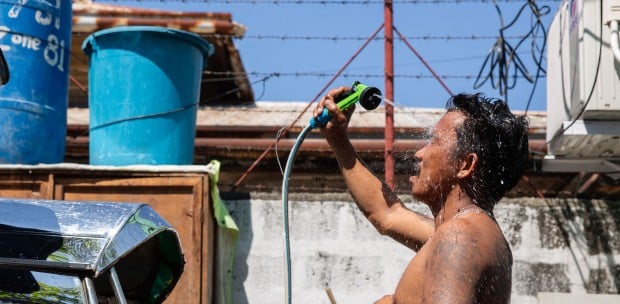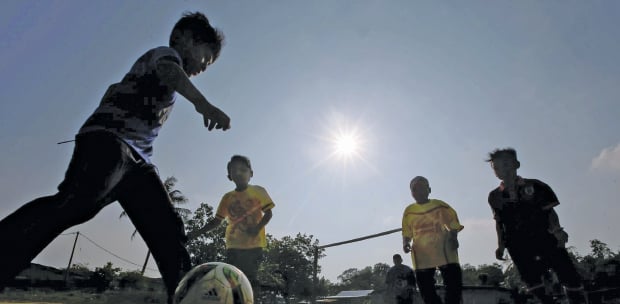HENA Khan, a grade nine student in Dhaka, has struggled to focus on her studies this week as temperatures surpassed 40ºC in the capital city.
"There is no real education in schools in this punishing heat," she said. "Teachers can't teach, students can't concentrate. Rather, our lives are at risk."
Khan is one of more than 40 million students who have been shut out of classrooms in recent weeks as heatwaves have forced school closures in parts of Asia and North Africa.
As the climate warms due to the burning of fossil fuels, heatwaves are lasting longer and reaching greater peaks as average temperatures rise.
In turn, government authorities and public health experts across the world are grappling with whether to keep students learning in hot classrooms, or encourage them to stay home and keep cool.
About 17 per cent of the world's school-aged children are already out of school, according to United Nations data, but the proportion is much larger in developing countries.
Children's test scores in the developing world also lag far behind developed countries.
Heat could make that worse, widening learning gaps between tropical developing nations and developed countries, experts told Reuters, and sending children to overheated schools could make them sick.
South Sudan already this year shuttered its schools to some 2.2 million students in late March when temperatures soared to 45ºC. Thousands of schools in the Philippines and in India followed suit in late April.
Meanwhile, Bangladesh continues to waver between opening and closing schools for some 33 million students amid pressure to prepare pupils for exams — even as temperatures climb to dangerous levels.
Many of the country's schools "don't have fans, the ventilation is not good, and they might have tin roofing which does not provide good insulation", said Shumon Sengupta, Bangladesh country director for non-profit Save the Children.
On Monday, one day after reopening schools, which had been closed last week due to heat, Bangladeshi authorities again closed all primary schools and educational institutions as temperatures reached 43ºC.
High temperatures slow down the brain's cognitive functions, lowering pupils' ability to retain and process information.
A May 2020 study found that American high schoolers performed worse on standardised tests if they were exposed to higher temperatures in the year leading up to the exam.
The research, published in the American Economic Journal, found that a 0.55ºC warmer school year reduced that year's learning by 1.0 per cent.
Much of that impact disappeared in schools that had air conditioning, said study co-author Josh Goodman, an economist at Boston University.
Somewhere between 40 and 60 per cent of US schools are thought to have at least partial air conditioning, according to various surveys.
In the US, the average performance of the lowest income students is about four years behind the highest income students, according to a 2019 study in the National Bureau of Economic Research.
"Climate change will widen the learning gaps between hot and cool countries," Goodman said. Some research suggests excessive heat in the tropics can impact a child's education even before birth.
Children in Southeast Asia exposed to higher-than-average temperatures in utero and early in life obtained fewer years of schooling later in life, a 2019 study in the Proceedings of the National Academy of Sciences found.
With many people in the region dependant on farming, high temperatures could hurt food production and household incomes, said study author Heather Randell, a sociologist at the University of Minnesota.
If crops are damaged by heat, children may not get enough to eat which can stunt their development, she said, and a family may no longer be able to afford school fees, or could pull children out of school to help on farms.
US schools are now cancelling class for an average of six to seven school days each year because of heat, compared with about three to four days a decade ago, said Paul Chinowsky, a civil engineer who led a 2021 study on schools and rising temperatures for the firm Resilient Analytics, which consults for governments and NGOs.
In Bangladesh, "last year, schools were closed for six to seven days," said Save the Children's Sengupta. "But this year, they are saying it might be closed for three to four weeks."
* The writers are from Reuters





